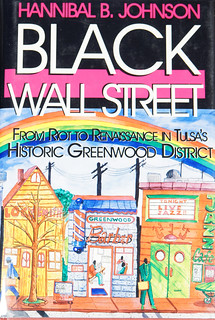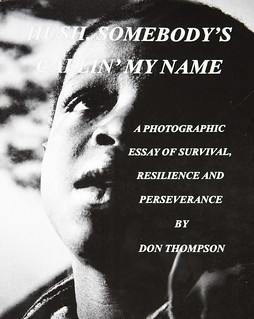This coming Monday is Martin Luther King Jr. Day. MLK’s life was devoted to creating equality and breaking the barriers between people of different races, specifically between blacks and whites. The city of Tulsa has a sad history of hate between races. Here at special collections we work to remember Tulsa’s past, no matter how tainted, and have created a collection devoted to photographs and news clippings from the Tulsa Race Riots of 1921. This illuminating collection can be found both online and on site and houses audio recordings of race riot lectures, newspaper clippings from Tulsa newspapers, National Guard reports, building permits for reconstruction in the aftermath, photos, and a scrapbook of images and clippings of the riot. Special Collections also houses books related to the Greenwood district, the riot, and the aftermath. Two books that provide both a narrative history and a visual history of the events in 1921 are Hannibal B. Johnson’s Black Wall Street: From Riot to Renaissance in Tulsa’s Historic Greenwood District and Don Thompson’s Hush, Somebody’s Callin’ My Name A Photographic Essay of Survival Resilience and Perseverance.
“Constrained by law, racism, and social custom, Tulsa’s African-American community survived and thrived for decades as a separate city, serving almost exclusively the needs of its own residents.” (Johnson, 27).
In his book, Johnson, pays homage to the successful community that existed in the Greenwood district of Tulsa prior to the disastrous events that took place in the Spring of 1921. He accounts the stories of business owners, families, church members, and workers who lived in Greenwood and helped to make the district as successful as it was. Although the riot was brutal and a sad part of Tulsa history, Johnson argues that the Tulsa riot was one of many race centered attacks that took place in that era of American history.“The events that transpired in Tulsa in the spring of 1921 are inextricably bound up in the look and feel of the America of that era. For African-Americans, bitter ironies defined the period: opportunity in the face of oppression, race-pride in the face of racism, patriotism in the face of paternalism. The years leading up to 1921 are noteworthy for their unprecedented violence” (Johnson, 29).
In Hush, Somebody’s Callin’ My Name Don Thompson collected a series of photographs that illuminate African American culture in the Greenwood District in the aftermath of the Race Riot. Images of community members, businesses, and churches show the affects of hatred and misunderstanding that ruined a very successful community.
Although we do not like to be reminded of the sordid history and dark days of Tulsa’s past, it is important to know the stories of our predecessors so that we can make changes for the future. To learn more about the Tulsa Race Riot and to reflect on the history of race in our city, visit us at Special Collections, located on the fifth floor of McFarlin library.


